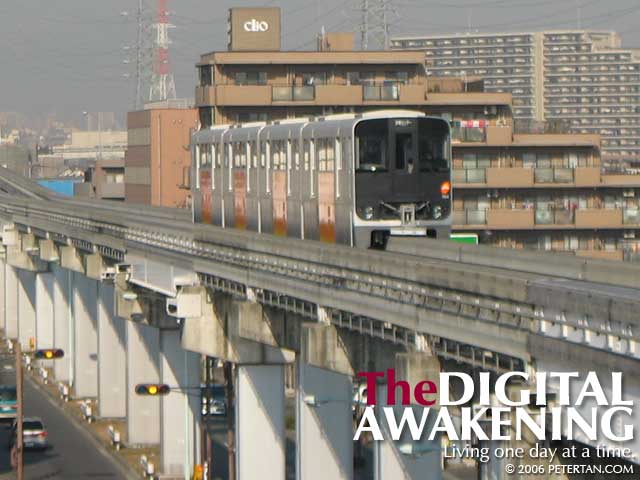
Tokyo Tama Intercity Monorail – Manganji Station
The announcement that the Cabinet has agreed to build a second bridge linking Penang to the mainland and a monorail system for the island is cause for celebration. I am most interested in the monorail. It is a good alternative to other modes of public transportation, namely the public bus that is in shambles, and the cut-throat taxi service that many cannot afford.
Since the monorail project is still in its preliminary planning stages, I would love to know if there are provisions to include accessible features like ramps, elevators and toilets. There should not even be a need for disabled persons to put in a request for such facilities. The concessionaires together with the relevant government ministries should and must make this monorail line as convenient as possible to everyone who will be using it.
It should not reach a stage where disabled persons need to resort to staging protests and demonstrations for accessible facilities like what happened to the Star-LRT in 1994. When it was built, the line did not incorporate those facilities. To add insult to injury, the management came out with a less than satisfactory statement.
“It all started off with Star-LRT executive director making a public announcement that they are not going to take disabled passengers,” Christine Lee recounted to me. She is the coordinator of a coalition of NGOs that organised a protest after the release of that statement. “The reasons cited was that disabled persons pose dangers to others during emergencies.”
Talk about frogs in a coconut shell. Regrettably, disabled persons still cannot ride on the Star-LRT line. It is now renamed the Ampang & Sri Petaling Line. Likewise, the government did not compel the developer of the KL Monorail to incorporate accessible facilities into the stations. Putra-LRT, now known as the Kelana Jaya Line, is the only city rail transit that has ramps and elevators at its stations.
These exclusions are most tragic. Disabled persons, the elderly and pregnant women who cannot go up the numerous flights of steps have no choice but are forced to use others modes of transport. The government should take heed the serious omissions by Star-LRT and KL Monorail. As a comparison, the Tokyo Tama Intercity Monorail that I had to take every evening when I was in Tokyo was as accessible as it could be. Even if I had to travel alone, I could have managed without a problem around the stations. The only hitch was the difference in height between the platforms and the trains. Nevetheless, the driver was more than willing to assist when needed.
We should also learn from our two immediate neighbours with regards to accessible facilities of rail systems. The Singapore MRT and the Bangkok Skytrain had to add elevators after the completion of the respective lines. It would have been more cost efficient had it been built into the original structure. Still, not all the stations are accessible. To their credit, they are adding elevators in stages to solve the issue. Are Star-LRT and KL Monorail planning to make their stations accessible anytime soon? Your guess is a good as mine.
Therefore, it is imperative that the Penang Monorail is barrier-free from Day One. It is not only the stations and trains that must bear such friendly designs. Walkways, kerb ramps and pedestrian crossings must be built in the areas surrounding the stations. Non-step low-floor feeder buses should be acquired and put into service to make it a system that is totally barrier-free.
It would be great if accessible designs are integrated at the conceptual stages without promptings. However, knowing how things work in Malaysia, pressure will be needed to ensure that whatever that is needed is in place and properly constructed. The government, the concessionaire and NGOs should work together in a win-win situation for everyone involved. After all, this project is for the benefit of all. As stakeholders and Penangites, we should have a say in it, too.
